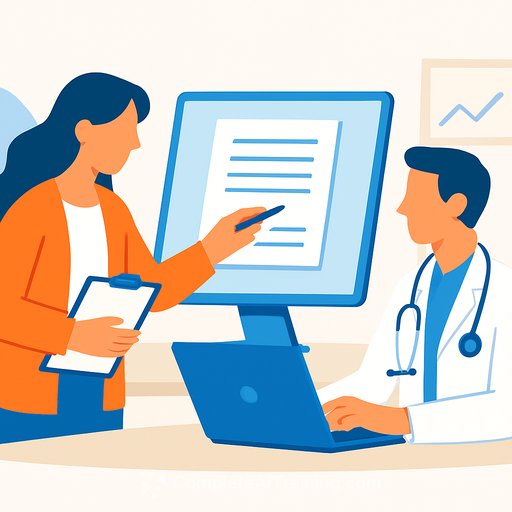Priming the Ambient AI Medical Scribe with Skriber
Most AI scribe vendors promise "no behavior change." Skriber takes the opposite path: teach clinicians how to use the tool well, and guide them during the encounter. The result is cleaner documentation, fewer gaps, and notes that match clinical intent.
Prime the scribe before you press record
The core practice is simple: give the scribe context before the visit starts. A few sentences on the patient's conditions, why they're here today, and key complaints. According to Dr. Connor Yost, Chief Medical Officer at Skriber, note quality is "astronomically higher" when the scribe is primed this way.
This quick pre-brief sharpens the model's focus, filters noise, and keeps the note anchored to the visit's purpose.
Name the diagnosis the way payers expect
Symptoms alone don't guarantee reimbursement. If the patient meets criteria for sepsis, say "sepsis" out loud. The same applies to other conditions that drive medical decision-making and coding details.
For additional context on documentation standards, see the official ICD-10-CM Guidelines.
Quality in, quality out
As Yost notes, large language models don't "know" quality-only patterns. Input quality sets the ceiling for output quality. Skriber helps by translating everyday clinician language into correct medical terminology and tuning to each specialty so irrelevant chatter doesn't pollute the note.
Templates that keep your voice
Skriber leans on specialty-specific templates to keep structure predictable and billing-ready. It "hears the physician's voice" and recreates their writing style, so notes feel familiar while staying consistent from visit to visit.
Fits current workflows
Skriber runs in an app or browser, integrates with several popular EHRs, and typically produces a note 2-3 minutes after the recording ends. Current transcription error rates sit around 6-7% and are expected to drop as in-room audio hardware improves.
How to get better notes, starting today
- Pre-brief in 20-30 seconds: "55-year-old with T2DM and HTN here for foot pain; concern for neuropathy; rule out infection."
- Say the diagnosis by name: Don't imply sepsis, heart failure, or AKI-state it if you're treating it.
- State visit intent: New problem vs. follow-up, med titration, pre-op clearance, or diagnostic workup.
- Mark clinical pivots: Flag red flags, risk, and rationale for tests or treatment changes.
- Close the loop: Summarize plan and patient instructions out loud to solidify the note.
- Use the right template: Pick the specialty template that matches the visit type.
Where Skriber fits
If you want ambient documentation that reflects how you actually practice, coaching the scribe is worth the extra half-minute up front. You speak naturally, the system handles translation and structure, and the note lands closer to billing and clinical needs.
Learn more about Skriber at skriber.com. If you're building broader prompt skills for clinical AI tools, see these practical resources on prompt engineering.
Your membership also unlocks:






